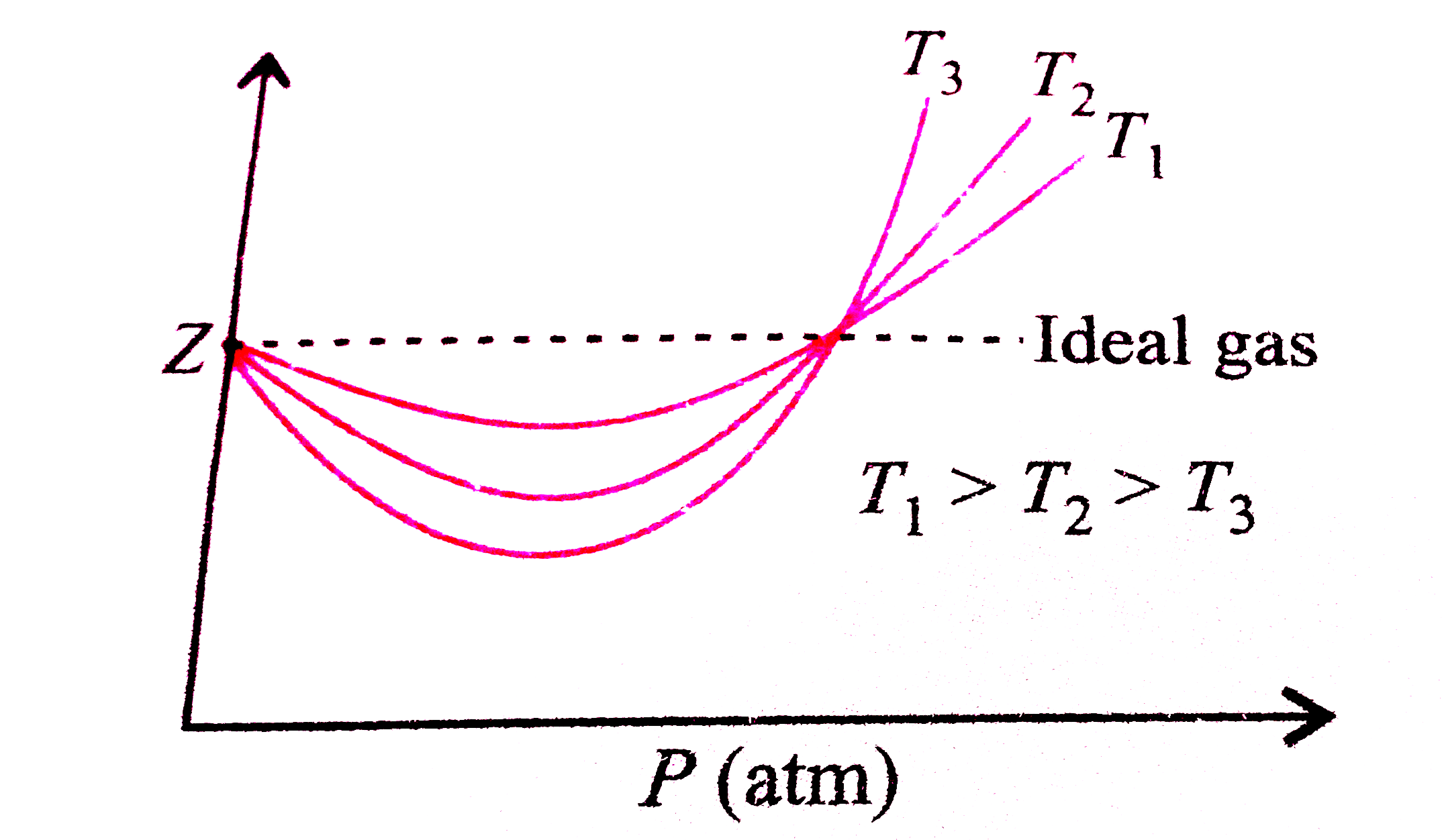A real gas behaves like an ideal gas if its
both pressure and temperature are high
both pressure and temperature are low
pressure is high and temperature is low
pressure is low and temperature is high
The correct Answer is:D
To determine under what conditions a real gas behaves like an ideal gas, we need to consider the fundamental assumptions of the ideal gas law and the behavior of real gases.
1. Understanding Ideal Gas Behavior:
- Ideal gases are defined by certain assumptions: they have no intermolecular forces, and the volume of the gas particles is negligible compared to the volume of the container. This means that the gas molecules are far apart from each other.
2. Conditions for Real Gases:
- Real gases deviate from ideal behavior under certain conditions, particularly at high pressures and low temperatures. At high pressures, gas molecules are forced closer together, and intermolecular forces become significant. At low temperatures, the kinetic energy of the molecules decreases, allowing these forces to have a more pronounced effect.
3. High Temperature and Low Pressure:
- A real gas behaves more like an ideal gas when the temperature is high and the pressure is low. At high temperatures, the kinetic energy of the gas molecules is high, which means they move rapidly and can overcome intermolecular forces. At low pressures, the molecules are farther apart, reducing the impact of these forces.
4. Conclusion:
- Therefore, a real gas behaves like an ideal gas when both the pressure is low and the temperature is high. This allows the assumptions of the ideal gas law to hold true, as the effects of intermolecular forces become negligible.
Final Answer:
A real gas behaves like an ideal gas if its pressure is low and temperature is high.
---
- Ideal gases are defined by certain assumptions: they have no intermolecular forces, and the volume of the gas particles is negligible compared to the volume of the container. This means that the gas molecules are far apart from each other.
- Real gases deviate from ideal behavior under certain conditions, particularly at high pressures and low temperatures. At high pressures, gas molecules are forced closer together, and intermolecular forces become significant. At low temperatures, the kinetic energy of the molecules decreases, allowing these forces to have a more pronounced effect.
- A real gas behaves more like an ideal gas when the temperature is high and the pressure is low. At high temperatures, the kinetic energy of the gas molecules is high, which means they move rapidly and can overcome intermolecular forces. At low pressures, the molecules are farther apart, reducing the impact of these forces.
- Therefore, a real gas behaves like an ideal gas when both the pressure is low and the temperature is high. This allows the assumptions of the ideal gas law to hold true, as the effects of intermolecular forces become negligible.
A real gas behaves like an ideal gas if its pressure is low and temperature is high.
Topper's Solved these Questions
- BOOK - NCERT FINGERTPS ENGLISHCHAPTER - KINETIC THEORYEXERCISE - Kinetic Theory of An Ideal Gas18videos
KINETIC THEORY
- BOOK - NCERT FINGERTPS ENGLISHCHAPTER - KINETIC THEORYEXERCISE - LAW OF EQUIPARTITION OF ENERGY5videos
KINETIC THEORY
- BOOK - NCERT FINGERTPS ENGLISHCHAPTER - KINETIC THEORYEXERCISE - Assertion And Reason10videos
KINETIC THEORY
- BOOK - NCERT FINGERTPS ENGLISHCHAPTER - GRAVITATIONEXERCISE - Assertion And Reason15videos
GRAVITATION
- BOOK - NCERT FINGERTPS ENGLISHCHAPTER - LAWS OF MOTIONEXERCISE - Assertion And Reason15videos
LAWS OF MOTION
Similar Questions
Knowledge Check
- Question 1 - Select One
The molecules of a gas are in constant (i) _______ motion . They move in (ii) ________ lines until they collide with another molecule . The collisions are perfectly (iii) _________ in nature . A real gas behaves as an ideal gas at (iv) _________ temperature and (v) _________ pressure .
A (i) (ii) (iii)(iv)(v)randomverticalstraighthighlowB (i) (ii) (iii)(iv)(v)straightrandomelasticlowhighC (i) (ii) (iii)(iv)(v)randomstraightelastichighlowD (i) (ii) (iii)(iv)(v)idealroundelasticlowhigh
Statement-1: A real gas behaves as an ideal gas at high temperature and low pressure .
Statement-2: Liquid state of an ideal gas is impossible.View SolutionStatement-1: A reas gas nearly behaves like an ideal gas at low pressure and high temperature.
Statement-2: If the ratio of translational and rotational degree of freedom is 1.5 the gas must be diatomic
Statement-3: Most probable speed of a gas is proportional to absolute temperature of the gas.View SolutionFor an ideal gas :
View SolutionFor an ideal gas :
View SolutionA gas behave most like an Ideal gas under conditions of
View SolutionBoyle's temperature or Boyle point is the temperature at which a real gas starts behaving like an ideal gas over a particular range of pressure. A graph is plotted between compressibility factor Z and pressure P.

What is the deviation of real gas from ideal behaviour in terms of compressibility factor , Z ?View SolutionAssertion An actual gas behaves as an ideal gas most closely at low pressure and high temperature.
Reason At low pressure and high temperature, real gases obey the gasl laws.View Solution

